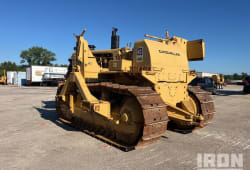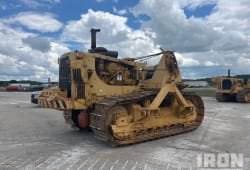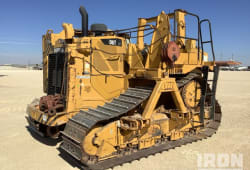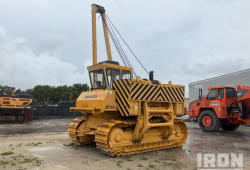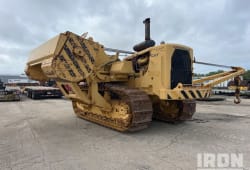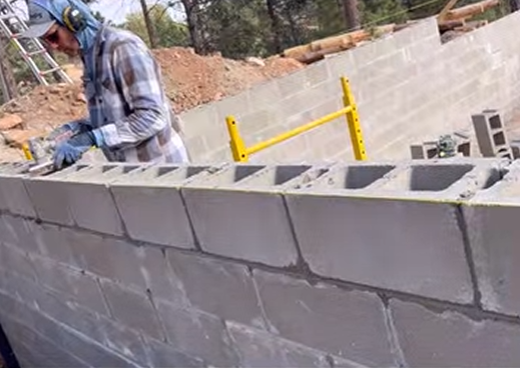Tricks To Find Used Pipelayers For Your Business
5 Min read
)
January 6, 2023
You probably have many options if you're hunting for the best used pipelayer for sale. But you may be asking yourself, can I find the right one for my needs? How do I thoroughly inspect it? How do I guarantee its value?
Buying new isn't always a financially smart option. You can find high-quality used pipelayer machines for affordable prices.
Common Uses Of A Pipelayer Machine
Pipelayer machines, sometimes called side booms, are used to move pipes and fit them into the right places.
These machines can transport pipes for both above-ground and underground projects. Examples of projects include storm sewers, sanitary sewers, and water mains.
In other words, the main objectives of pipelaying machines are to dispose of sewage waste and provide drainage and water flow.
What Pipelayer Machine Do You Need?
While the terms are used interchangeably, there are some differences between a pipelayer machine and a side boom. Knowing these differences will help you determine what machine you need.
First, pipelayers can pick up and place materials at a 360-degree circumference. Side booms are not mounted on a rotator.
Pipelayers are versatile, and you can use them in more environments than side booms. However, side booms have a notably higher capacity level than pipelayers.
Side boom operations can occur on both the left and right side of the machine, whereas pipelayers can only conduct operations on one side of the vehicle.
How To Determine Value And Inspect A Pipelayer Machine
Searching for the best used pipelayer for sale means you have to put effort into inspecting potential purchases. The best way to do this is to conduct a thorough evaluation of the machine's value by checking the following:
Check the percentage of undercarriage remaining on both sides for each component. This includes the rails, rollers, idlers, sprocket segments, and trackpads. Ensure the trackpads and bolts are tight. Reconsider your purchase if you notice missing pads and bolts or wear and tear levels are not to your liking. Check the final drive for leaks. Inspect the engine compartment for damaged hoses, chafed wires, and signs of a hydraulic leak, like wet spots. Check the fan belts for cracks. Check the radiator and note dirt build-up, damage, and leakage. Check the main supports on the body of the machine. Look for cracks, bends, dents, and other clear signs of damage. Closely inspect the boom, ensuring it swivels properly, while checking for cracks in the hook. Test the pipelayer by using the boom and making a mental note of strange sounds, problems with counterweight controls, and the lifting capacity. Always inquire with the seller about recent service records and ask to see them. You can hire someone to inspect for extra peace of mind. Take multiple photographs of every part of the machine. Take a video of yourself trying it out.
Machine Lifespan And Total Usage Hours
Pipelayers can last for years with regular maintenance and proper attention. Regular maintenance can extend the lifespan, so you should find a machine with a diligent original owner. But it's imperative to know how old your pipelayer is so you can note its total service hours.
Service hours may be the value that helps you finalize your decision. Do you want to be saddled with a machine that needs immediate repairs? Or would you prefer a newer machine that will save time and delay serious maintenance?
For example, a machine over six years old (roughly 12,000 service hours) may come with the task of fixing the coolant system. And with slightly fewer hours, roughly 10,000, you may have to replace DEF manifold filters.
But newer machines aren't exempt from maintenance. At just 500 hours, you still need to obtain the engine oil and filter, replace the fuel system filters, check winch frame mounting, and so much more. It may be strategically sound to opt for an older machine where the previous owner has tended to tasks over the years, but be sure to ask for proof of maintenance history.
Pipelayer Prices And Depreciation
Smaller, older machines from the 1960s are generally listed for asking prices at around $20,000-30,000. The more modern the machine is, the more the seller will ask for, and machines made in the 2000s can cost between $200,000 and $300,000. But remember, these prices are just a general idea, can vary, and are often negotiable.
That's why it's so important to be knowledgeable about depreciation and the value of heavy-duty assets. Use an expert to ensure you have a keen sense of heavy-duty equipment valuations. You need to know important details such as age and condition, modernity and level of technology available, depreciation issues, a summary of values, and more.
Ready To Purchase A Used Pipelayer?
As you know, there are plenty of factors to consider when buying heavy-duty machinery. The main goal is to ensure smooth operations for your worksite without taking too much of a financial hit. This guide should do the trick in finding an efficient pipelayer at a fair price. The most important factor is buying a machine that will last you for the foreseeable future.

Rex Walz is Boom & Bucket's Manager of Supplier Relations, bringing over a decade of experience in B2B sales and heavy equipment solutions. With a background spanning government, construction, industrial, and commercial sectors, he has a proven track record of driving growth and building trusted customer relationships. At Boom & Bucket, Rex is passionate about helping partners succeed while advancing the company's mission to create the most trusted marketplace for heavy equipment.






